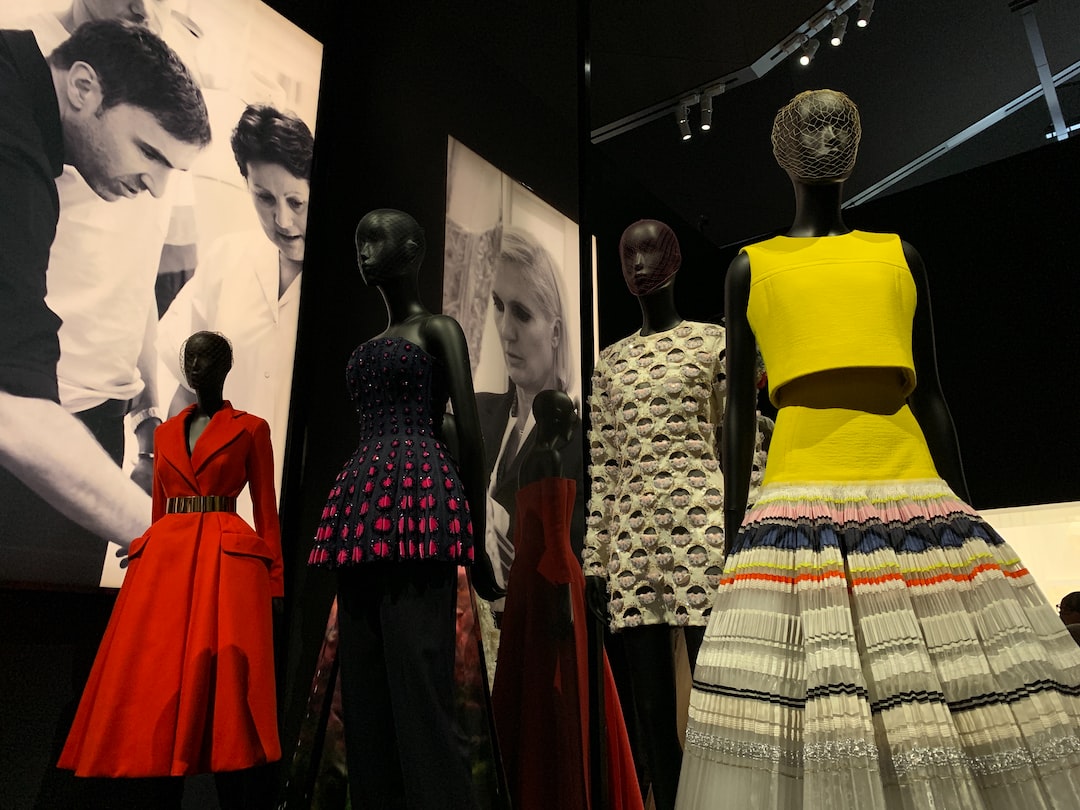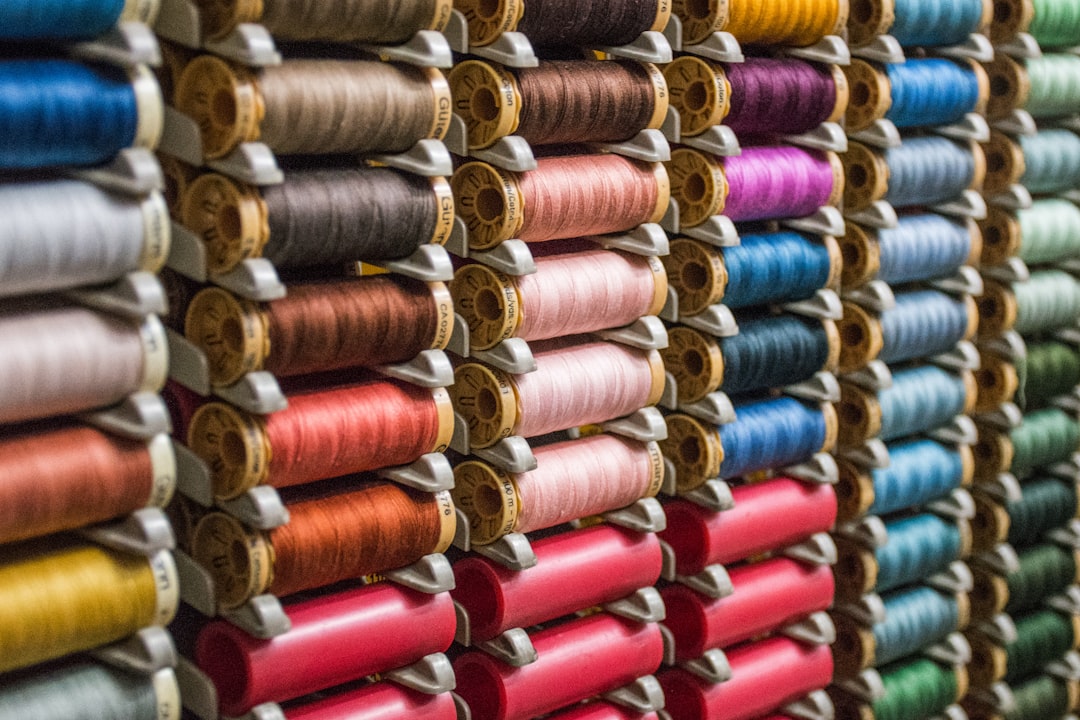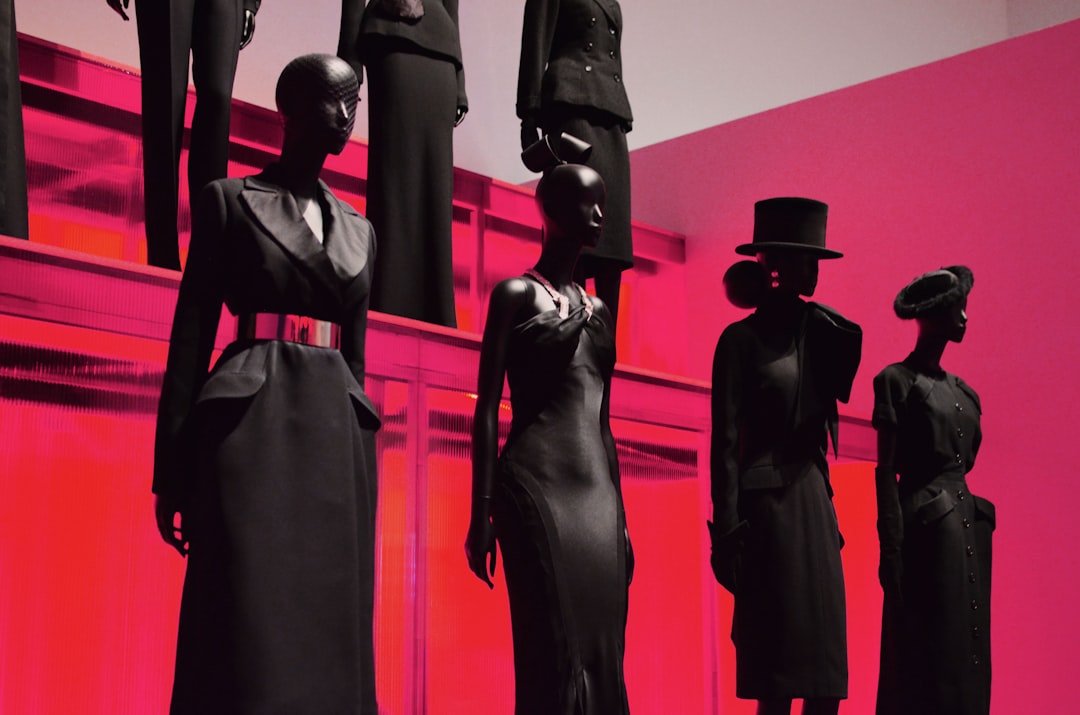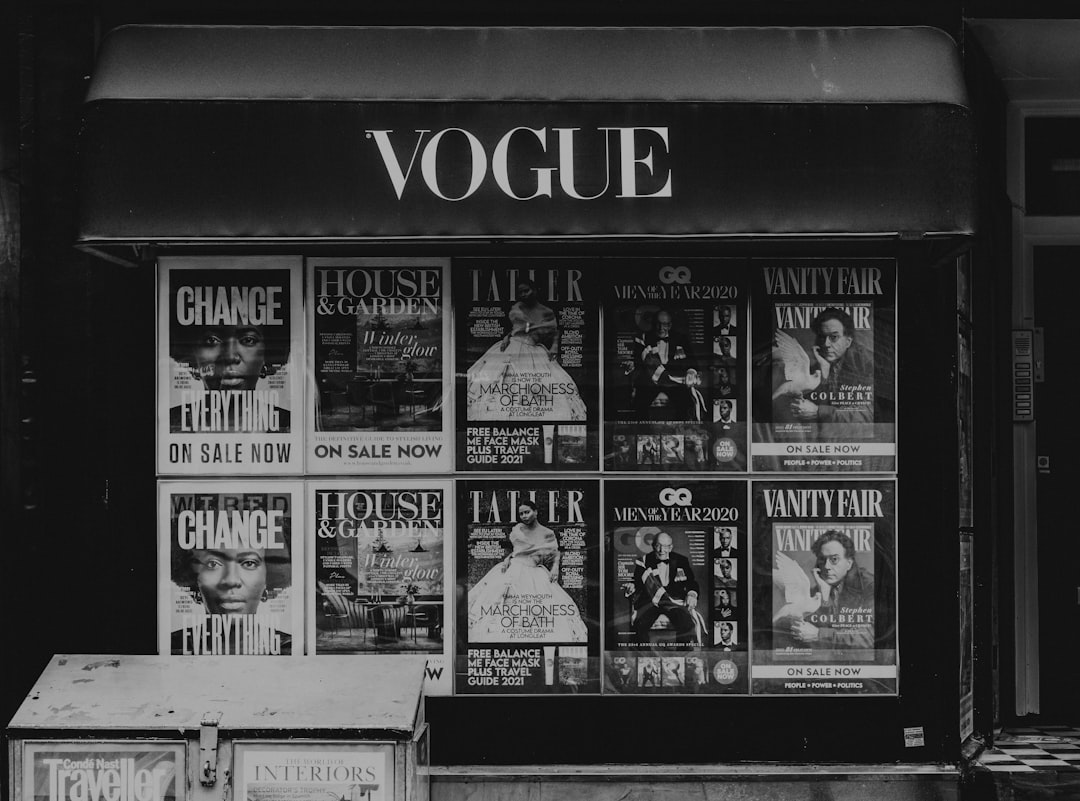As technology continues to advance, it has become increasingly clear that artificial intelligence (AI) is not just a passing trend. In fact, AI is rapidly transforming the fashion industry, with its impact being felt in various areas from production to retail. This has led to a growing interest in AI’s potential to revolutionize the way we create, produce, and consume fashion.
AI is a technology that allows machines to learn from data and make decisions based on that learning. In fashion, AI is being used to improve everything from supply chain management to customer experience. It is helping brands to streamline their production processes, personalize shopping experiences, predict trends, embrace sustainable solutions, and even offer virtual try-ons.
The rise of AI in fashion is not surprising when you consider the benefits it offers. For instance, AI can help brands to reduce waste and optimize their resources, resulting in a more sustainable and eco-friendly approach to fashion. AI can also help retailers to provide a more personalized shopping experience, which can increase customer loyalty and satisfaction. Additionally, AI can help designers to predict trends and create more innovative designs.
As the fashion industry continues to evolve, it is clear that AI will play a significant role in shaping its future. In the following sections, we will explore the different ways in which AI is transforming the fashion industry, from smart manufacturing to virtual try-ons. Join us as we dive deeper into this exciting topic!
Smart Manufacturing: How AI is Streamlining Production
As the fashion industry continues to evolve, so does the way we produce clothing. With the introduction of artificial intelligence (AI), the manufacturing process has become more efficient than ever before. AI has the ability to analyze vast amounts of data, identify patterns, and make predictions based on that data. This has led to a significant reduction in production time and costs, making it easier for companies to keep up with the ever-changing demands of the fashion industry.
One of the main benefits of AI in manufacturing is its ability to identify inefficiencies in the production process. By analyzing data from various stages of production, AI can identify areas where improvements can be made. For example, AI can analyze the production line and identify bottlenecks, which can then be addressed to improve efficiency. This not only speeds up production but also reduces costs, making it easier for companies to offer more affordable clothing to consumers.
Another way that AI is streamlining production is through the use of predictive analytics. By analyzing data from previous production runs, AI can make predictions about future production runs. This helps companies to plan more effectively, ensuring that they have the right materials and resources in place to meet demand. This reduces the risk of overproduction or underproduction, which can be costly for companies.
AI is also being used to improve quality control in the manufacturing process. By analyzing data from various stages of production, AI can identify defects or quality issues before they become a problem. This allows companies to address these issues before the product is shipped, ensuring that customers receive high-quality products.
Overall, AI is transforming the way we produce clothing. With its ability to analyze data, identify inefficiencies, make predictions, and improve quality control, AI is streamlining the production process and making it easier for companies to keep up with the demands of the fashion industry. As AI continues to evolve, we can expect to see even more advancements in the manufacturing process, leading to more affordable, high-quality clothing for consumers.
Overall, AI is transforming the way we produce clothing.
Personalized Shopping: AI’s Role in Customization
With the rise of artificial intelligence (AI) in the fashion industry, personalized shopping experiences have become more accessible than ever. AI has revolutionized the way we shop and has made it possible for retailers to offer customized products and services to their customers.
One of the main advantages of AI in personalized shopping is that it allows fashion retailers to gather vast amounts of data on their customers’ shopping habits and preferences. By analyzing this data, AI algorithms can create personalized recommendations for each customer, based on their individual tastes and preferences. This means that customers can enjoy a more tailored shopping experience, with a greater chance of finding something that they love.
AI is also making it easier for retailers to offer customized products and services. For example, some fashion companies are using AI to create customized clothing for their customers. By collecting data on each customer’s body measurements and style preferences, AI algorithms can create clothing that is tailored to their specific needs and tastes. This means that customers can enjoy a one-of-a-kind shopping experience, with clothing that is designed specifically for them.
Another way that AI is revolutionizing personalized shopping is through virtual styling assistants. These AI-powered assistants can help customers find the perfect outfit by suggesting items that match their style and preferences. They can also help customers create complete looks by suggesting accessories and other items that complement their outfit.
Overall, AI has had a significant impact on personalized shopping in the fashion industry. By gathering data on customers’ preferences and habits, and using this information to create customized products and services, AI is helping retailers to offer a more personalized and tailored shopping experience. As AI technology continues to advance, we can expect to see even more exciting developments in personalized shopping in the future.
For example, some fashion companies are using AI to create customized clothing for their customers.
Trend Forecasting: How AI is Predicting Fashion’s Future
Fashion is constantly evolving, and staying ahead of the curve is essential for fashion designers and retailers. This is where AI comes in. With its ability to process vast amounts of data and analyze patterns, AI is revolutionizing the way fashion trends are forecasted.
One of the most significant advantages of AI in trend forecasting is its ability to analyze social media data. By tracking hashtags, mentions, and other social media metrics, AI can identify emerging trends and predict what will be popular in the future. This data can also be used to identify influencers and celebrities who are driving trends, allowing fashion brands to target their marketing efforts more effectively.
AI can also analyze sales data to identify patterns and trends in consumer behavior. This data can be used to predict which styles and products will be popular in the future, allowing fashion brands to adjust their production and marketing strategies accordingly. This can help reduce waste and increase profits, making the fashion industry more sustainable and profitable.
Another advantage of AI in trend forecasting is its ability to analyze images and identify patterns. By analyzing runway shows, street style photos, and other fashion-related images, AI can identify emerging trends and predict what will be popular in the future. This can be especially useful for designers who need to stay ahead of the curve and create new and innovative styles.
Finally, AI can also be used to analyze weather data and predict which styles and products will be popular in different regions and seasons. This can help fashion brands adjust their production and marketing strategies to meet the needs of different markets and seasons, ensuring that they stay ahead of the competition and remain profitable.
AI is revolutionizing the way fashion trends are forecasted. By analyzing social media data, sales data, images, and weather data, AI can identify emerging trends and predict what will be popular in the future. This can help fashion brands stay ahead of the curve, reduce waste, increase profits, and create a more sustainable and profitable industry.
By tracking hashtags, mentions, and other social media metrics, AI can identify emerging trends and predict what will be popular in the future.
Sustainable Solutions: AI’s Impact on Eco-Friendly Fashion
As the fashion industry continues to grow, so does its impact on the environment. From the excessive amount of water used in textile production to the harmful chemicals used in dyeing fabrics, the industry is known for its negative impact on the planet. However, with the help of AI, the fashion industry is starting to find sustainable solutions to these problems.
One way AI is making a positive impact on eco-friendly fashion is through the use of data analysis. By analyzing data on consumer behavior and environmental factors, AI can help fashion brands make more informed decisions about their production processes. This can include everything from choosing more sustainable materials to optimizing production schedules to minimize waste.
Another way AI is helping the fashion industry become more sustainable is through the development of new materials. By using machine learning algorithms, scientists can create new materials that are more environmentally friendly than traditional fabrics. For example, some companies are using AI to develop plant-based materials that are biodegradable and require less water to produce.
In addition to these advancements, AI is also helping fashion brands reduce their carbon footprint through more efficient supply chain management. By analyzing data on shipping routes and transportation methods, AI can help companies find ways to reduce their carbon emissions and improve their overall sustainability.
Overall, the use of AI in the fashion industry is having a positive impact on the environment by helping brands find more sustainable solutions to their production processes. As the technology continues to develop, we can expect to see even more advancements in eco-friendly fashion that will benefit both the planet and consumers.
By analyzing data on consumer behavior and environmental factors, AI can help fashion brands make more informed decisions about their production processes.
Virtual Try-On: The Advancements in AR and VR
As technology continues to evolve, the fashion industry has been experimenting with virtual try-on through the use of augmented reality (AR) and virtual reality (VR) technologies. These advancements have allowed consumers to try on clothes virtually, providing a more immersive and interactive shopping experience.
AR technology uses a camera and a screen to superimpose digital images onto the real world. This technology has been used in the fashion industry to create virtual fitting rooms, where customers can see how clothes look on them without physically trying them on. This has become increasingly popular during the COVID-19 pandemic, where many brick-and-mortar stores have had to close their doors temporarily.
VR technology, on the other hand, creates a completely immersive experience in a virtual world. This technology has been used in the fashion industry to create virtual fashion shows and to allow customers to explore a brand’s collection in a virtual environment.
Both AR and VR technologies have their advantages and disadvantages. AR technology is more accessible as it only requires a smartphone or tablet, while VR technology requires specialized equipment such as a headset. However, VR technology provides a more immersive experience, allowing customers to see the clothes in a more realistic way.
One of the challenges with virtual try-on technology is creating accurate representations of the clothes. This requires detailed 3D models of the clothes, which can be time-consuming and expensive to create. Additionally, virtual try-on technology does not take into account the feel of the clothes, which is an important factor for many shoppers.
Despite these challenges, virtual try-on technology has the potential to revolutionize the fashion industry. By providing a more interactive and immersive shopping experience, it can help to increase customer engagement and satisfaction. As the technology continues to evolve, it is likely that we will see more and more fashion brands incorporating virtual try-on into their online and brick-and-mortar experiences.
Virtual try-on technology is just one of the many ways that AI is transforming the fashion industry. By using AR and VR technologies, fashion brands are able to provide a more personalized, immersive, and interactive shopping experience. While there are still challenges to overcome, the potential benefits of virtual try-on technology make it an exciting development to watch in the world of fashion.
Additionally, virtual try-on technology does not take into account the feel of the clothes, which is an important factor for many shoppers.
Conclusion: The Future of Fashion with AI
As we have explored in the previous sections, AI is revolutionizing the fashion industry in numerous ways. From streamlining production to predicting trends and enabling virtual try-ons, AI is offering solutions that were once unimaginable. But what does the future hold for fashion with AI?
First and foremost, AI will continue to play a crucial role in the industry’s sustainability efforts. With the current state of the planet, it is more important than ever to adopt eco-friendly practices, and AI can help fashion brands achieve this. By analyzing data on materials and production processes, AI can identify areas that need improvement and suggest sustainable alternatives. This will not only benefit the environment but also appeal to consumers who are increasingly conscious of their impact on the planet.
Moreover, AI will enable a more personalized shopping experience for consumers. As AI algorithms become more sophisticated, they will be able to analyze consumer data in real-time and provide personalized product recommendations. This will allow brands to offer a more tailored experience to their customers, increasing customer loyalty and satisfaction.
In addition, AI will continue to advance in the area of virtual try-ons. As AR and VR technologies improve, consumers will be able to try on clothes virtually, eliminating the need for physical try-ons. This will not only save time and resources but also reduce the number of returns, as consumers will have a better idea of how the clothes will fit and look.
Finally, AI will enable fashion brands to be more responsive to trends and consumer demand. By analyzing social media data and search trends, AI can predict what consumers will want before they even know it themselves. This will allow brands to create products that are in high demand, reducing waste and increasing profitability.
In conclusion, the future of fashion with AI is bright. As the technology continues to advance, it will enable brands to become more sustainable, personalized, and responsive to consumer demand. While there are still challenges to overcome, such as ethical concerns and the need for human creativity, the potential benefits of AI in fashion are too great to ignore.





